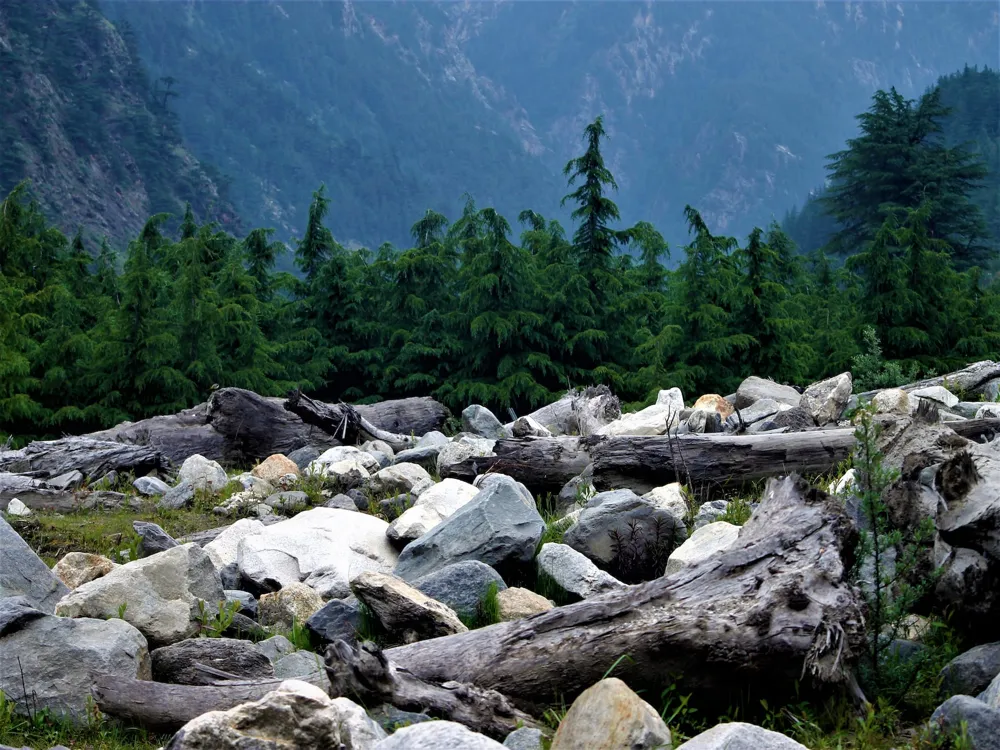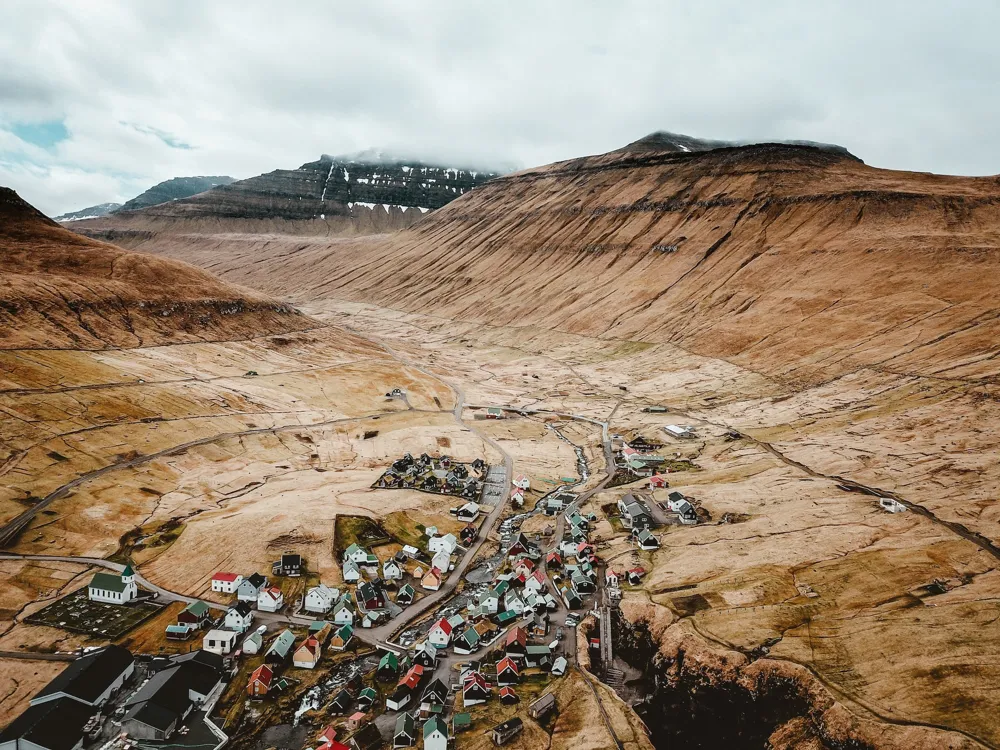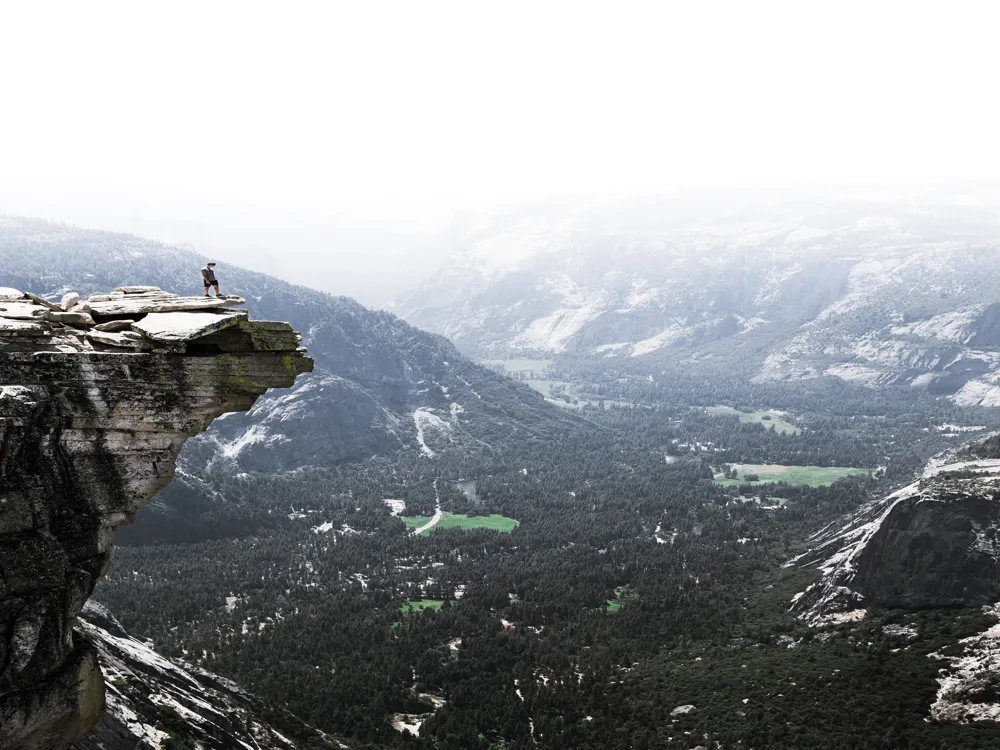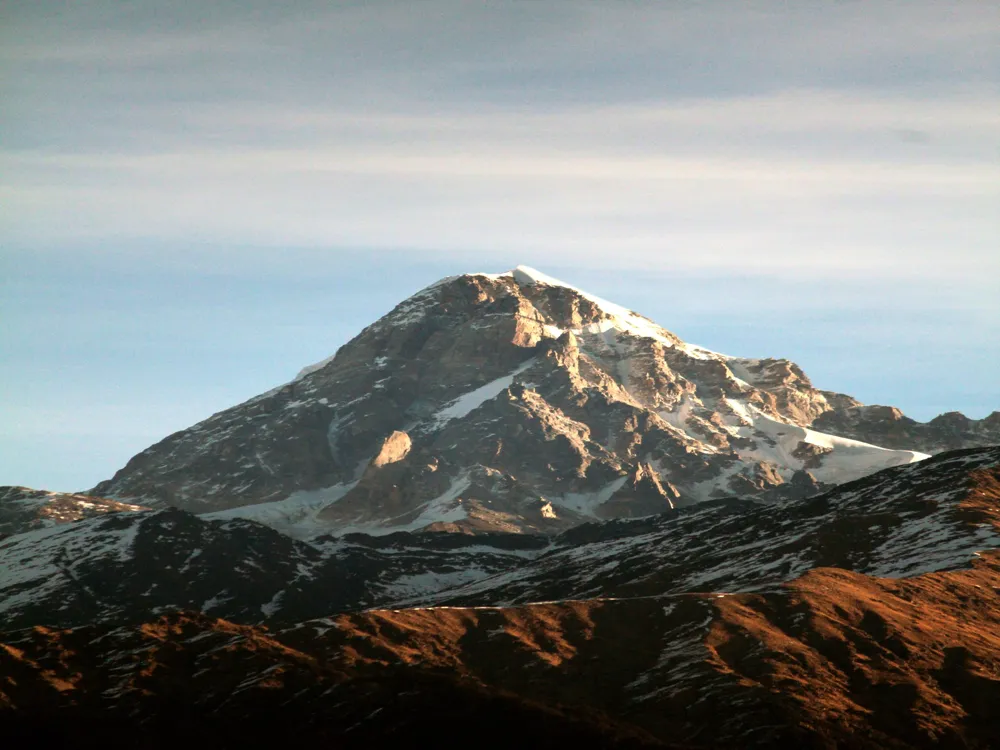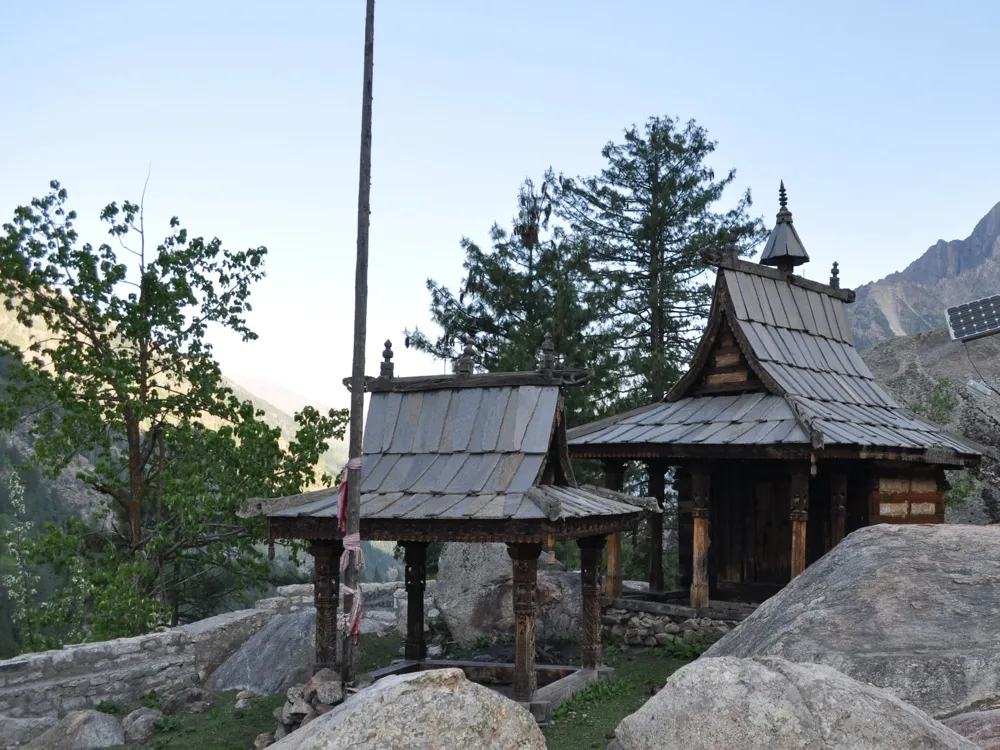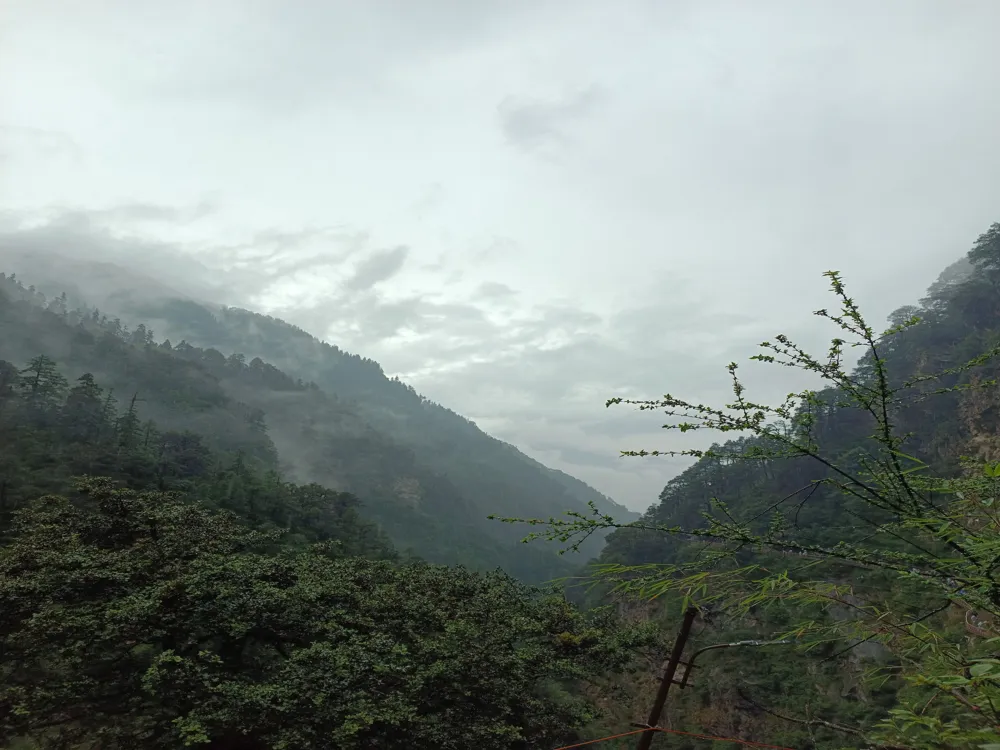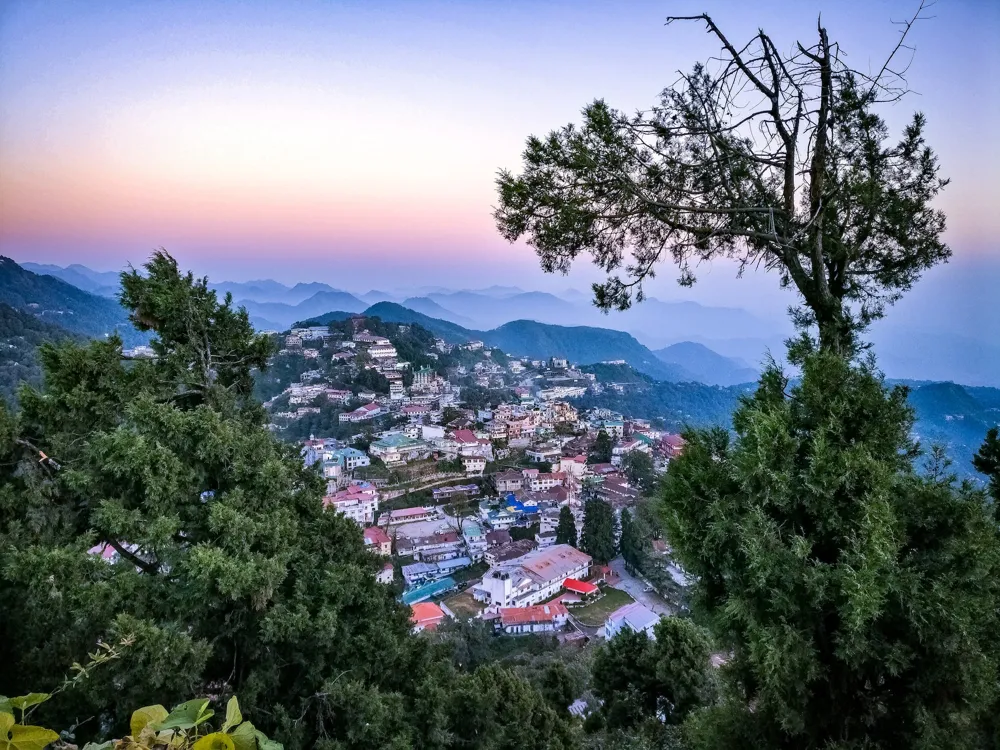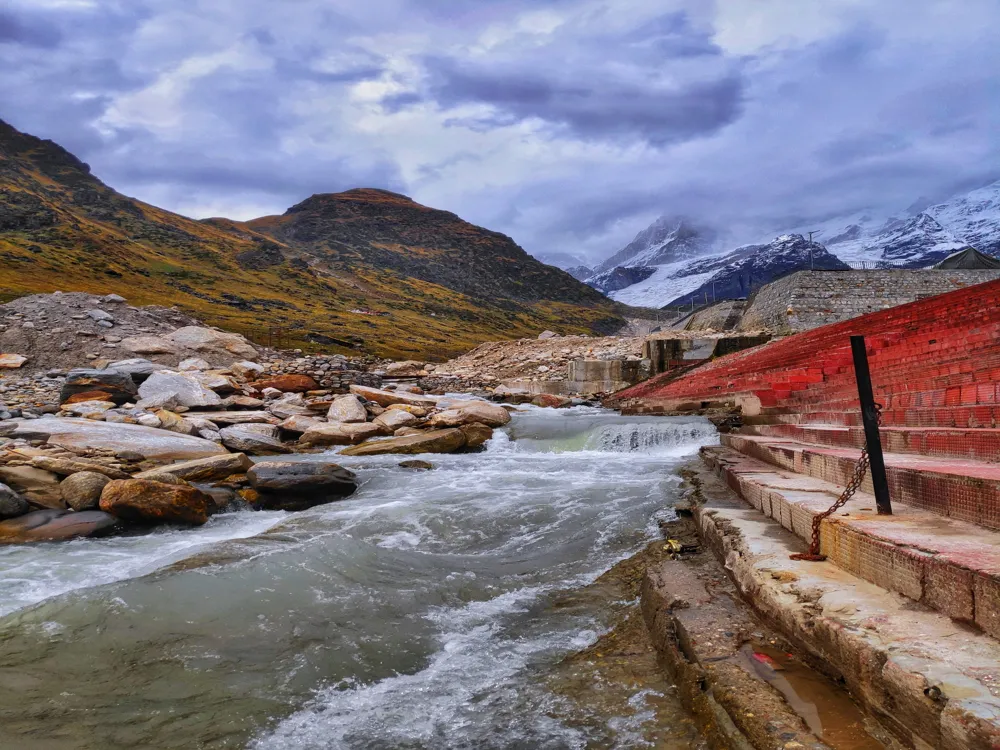Nestled in the serene lap of the Garhwal Himalayas, Mukhwas Village in Harsil, Uttarakhand, is a hidden gem waiting to be explored. This quaint village, located at an elevation of about 2620 meters above sea level, is not just a place but a tranquil experience, blending spirituality with natural beauty. Harsil, known for its picturesque landscapes and apple orchards, serves as the gateway to Mukhwas Village, making the journey as mesmerizing as the destination itself. Mukhwas Village, often overshadowed by its more famous neighbors like Gangotri, holds its unique charm. The village is most renowned as the winter abode of Goddess Ganga. According to local beliefs, when the Gangotri Temple closes during the winter, the idol of Goddess Ganga is brought down to Mukhwas Village. This tradition imbues the village with a deep spiritual significance, attracting devotees and tourists alike. The natural beauty of Mukhwas Village is unparalleled. Surrounded by dense deodar forests and with the Bhagirathi River meandering nearby, the village offers a panoramic view of snow-capped mountains and lush green valleys. The tranquil environment is a perfect retreat for those looking to escape the hustle and bustle of city life. The biodiversity here is rich, with a variety of flora and fauna that can be spotted in the vicinity, making it a haven for nature lovers and wildlife enthusiasts. Culturally, Mukhwas Village is a melting pot of traditions and lifestyles. The locals, primarily belonging to the Bhotiya tribe, are known for their warm hospitality and rich cultural heritage. Their lifestyle, deeply rooted in nature and spirituality, offers a glimpse into a simpler, more harmonious way of living. The village also serves as a testament to the coexistence of different religious beliefs, with Hindu temples coexisting alongside Buddhist monasteries. For adventure seekers, Mukhwas Village offers a plethora of activities. Trekking through the verdant trails, camping under the star-lit sky, and participating in the local festivals are just a few experiences that make a visit to this village unforgettable. The untouched natural beauty also provides ample opportunities for photography enthusiasts to capture stunning landscapes and candid moments of rural life. The architecture of Mukhwas Village is a beautiful amalgamation of traditional Himalayan styles and modern influences. The buildings in the village are predominantly constructed using locally sourced materials like wood and stone, which not only makes them eco-friendly but also helps them blend seamlessly with the natural surroundings. One of the most striking features of the village's architecture is the use of intricately carved wooden windows and doors, which are not just functional elements but also works of art. These carvings often depict scenes from local folklore or Hindu mythology, reflecting the deep-rooted cultural heritage of the region. The roofs are generally slanted, designed to withstand heavy snowfall during winters, and are covered with wooden shingles or slate tiles, adding to the rustic charm of the buildings. The traditional houses, known as 'Pahari houses', are typically two-storied structures with the ground floor used for housing cattle and storing food and tools, while the upper floor serves as the living area for the family. This arrangement is practical for the harsh Himalayan winters, as the animals' body heat helps keep the living quarters warm. Another distinctive feature of the architecture is the Buddhist influence, evident in the presence of prayer flags, stupas, and prayer wheels in many parts of the village. These elements not only add a spiritual dimension to the architecture but also bring in a burst of color against the natural green and brown backdrop. In recent years, there has been a conscious effort to preserve traditional architectural styles while incorporating modern amenities. This has led to the emergence of eco-friendly homestays and guest houses that offer a comfortable stay without compromising the ecological balance of the region. The use of solar panels for energy, rainwater harvesting systems, and organic farming practices in these establishments are testaments to the village's commitment to sustainable living. The ideal time to visit Mukhwas Village is from April to June and September to November. During these months, the weather is pleasant, making it perfect for exploring the village and its surroundings. Winters, from December to March, are harsh with heavy snowfall, but they offer a unique experience with the village covered in a blanket of snow. Depending on the season, your packing list should include warm clothing, especially if you're visiting during the colder months. Carry comfortable walking shoes, as exploring the village involves a fair amount of walking. Don't forget to pack your camera, binoculars for bird watching, and a good book to enjoy in the peaceful surroundings. Respect the local customs and traditions. Dress modestly, especially when visiting religious sites. It's always good to ask for permission before taking photographs of the locals or their property. Participate in local festivals and rituals to get a deeper understanding of the culture, but always do so respectfully. Given the village's high altitude, take time to acclimatize to avoid altitude sickness. Stay hydrated and avoid overexertion. It's advisable to carry a basic first aid kit and medications for common ailments. Also, be aware of the wildlife in the area and maintain a safe distance. Mobile connectivity can be patchy in Mukhwas Village, so inform your family and friends about your travel plans beforehand. Carrying a power bank is recommended as electricity can be intermittent in remote areas. Mukhwas Village in Harsil can be reached via a combination of road and trekking routes. The nearest airport is Jolly Grant Airport in Dehradun, approximately 232 kilometers away. From the airport, one can hire a taxi or take a bus to Harsil. The nearest railway station is also in Dehradun. From Harsil, Mukhwas Village is a short trek away, allowing visitors to immerse themselves in the beauty of the region right from the start of their journey. Read More:Overview of Mukhwas Village, Harsil, Uttarakhand
Architecture of Mukhwas Village
Tips When Visiting Mukhwas Village
Best Time to Visit
What to Pack
Local Etiquette and Customs
Health and Safety
Staying Connected
How To Reach Mukhwas Village
Mukhwas Village
Harsil
Uttarakhand
NaN onwards
View harsil Packages
Harsil Travel Packages
View All Packages For Harsil
Top Hotel Collections for Harsil

Private Pool

Luxury Hotels

5-Star Hotels

Pet Friendly
Top Hotels Near Harsil
Other Top Ranking Places In Harsil
View All Places To Visit In harsil
View harsil Packages
Harsil Travel Packages
View All Packages For Harsil
Top Hotel Collections for Harsil

Private Pool

Luxury Hotels

5-Star Hotels

Pet Friendly







